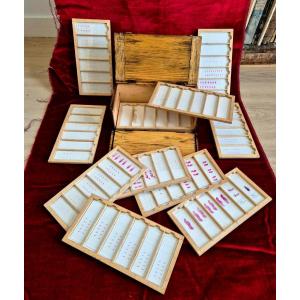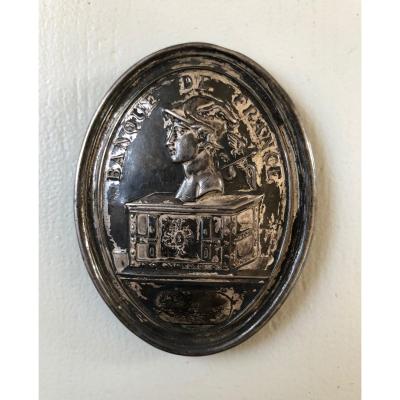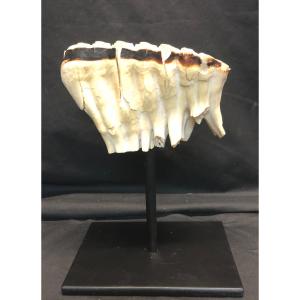Called "Gallstone" used as an antidote by doctors, apothecaries, alchemists. This object also has a special place in cabinets of curiosities and naturalists from the 17th century. A bezoar is a concretion formed in the stomach of animals from undigested parts. This foreign body is formed in the rumen of ruminants by concentric accumulation of roots or plant remains, earth, other various debris and hair.
This is a so-called "young" bezoar, not calcified, probably testifying to a short stay in the mind of the ruminant animal. These "stomach stones" are surprising for their great lightness.
Diameter of approximately 10 cm.
Presented on a gilded brass base, available with on request.
Old collection. Origin of a return trip from West Africa, circa 1960.
Some surface holes caused by detritivorous insects, evidence of the bezoar being stored in the open air after its extraction. As it dries, the surface layer cracks into "scales" in some places, evidence of concentric accumulation.


































 Le Magazine de PROANTIC
Le Magazine de PROANTIC TRÉSORS Magazine
TRÉSORS Magazine Rivista Artiquariato
Rivista Artiquariato